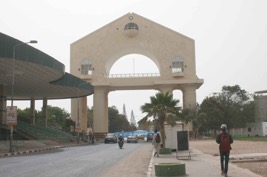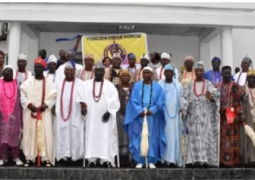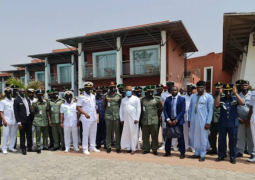
Making this known to the public shortly after preliminary conservation and inventory of structures in Banjul meeting held at the National Museum, Banjul, Hassoum Ceesay, the director general of the National Centre for Arts and Culture (NCAC), said the Centre has benefited from a UNESCO funded project under participation programme (PP).
The project, he said, is titled ‘Inventory of Historic Banjul for Inform Policy Toward Heritage Conservation and Management’, which the Centre applied for through the NATCOM UNESCO The Gambia.
Mr. Ceesay noted that Banjul, the Capital City of The Gambia is over 200 years old and it has a lot of built heritages that qualify for protection in Gambian law. “Even if it is 99 years and above, it becomes a heritage and monument.”
He said developments in the city have destroyed most of these heritages which have been pulled down because of ports expansion, urban projects, and house building.
“Since independence, we have the building of stores, warehouses, apartments, and more of these good developments are done at the detriment of the built heritage in Banjul, and these built heritages in Banjul are to the Gambia just like what New Orleans is to America or St Louis is to Senegal,” Hassoum Ceesay underscored.
Among these built heritages are architecture, unique building designs, and even homes that are 100 years that used to be the homes of prominent citizens of this country deserve protection.
To protect them, “there is need for inventory or a list of these buildings, locations, significance and what to do to protect them, but this can be done when there is management plan/policy, regulation/law put in place,” he outlined.
As part of the National Development Plan (NDP) – which is very strong on the protection of heritage “we want to start the project and we want it to be an inclusive project that includes city council, religious leaders, community leaders, representative leaders, councilors, MPs, local historians, youth and women’s groups,” he added.
The importance of this inventory of Banjul Heritage structures includes the creation of a roadmap to protect what is left of the historic city of Banjul, having a comprehensive inventory of works, ports, squares, parks, cemeteries, government buildings like Quadrangle, Clock Tower, clay and wooden houses and all of them that are one hundred years and above.
He added that “it will add architectural and occupancy values, meaning, and the persons living there to it. This is because historical structures are demolished every day in Banjul, making this project timely.”
Mamat Sallah, assistant director of Museums and Monuments, NCAC, expressed that most of the “Half-Die area is almost gone because of the Ports expansion project.” Noting that historical buildings in that area are very viable to the history of the city and “the last part of the structures left in Banjul are what the Physical Planning and the government already proposed for demolition again in due time, though they are still holding on.”
Mr. Sallah disclosed that the center visits the proposed area for demolition and took photographs of some of the structures and heritages left but proposed for demolition soon.
“Once the area is demolished, the entire history and heritage of the area will be erased. That’s why it is important for NCAC to inventory the area, and this makes the project very essential to us at NCAC and The Gambia,” he stated.
He reiterated that the inventories of these heritage structures will give an idea of which of the places need protection. And ‘without knowing the inventory, there is nothing NCAC can do to safeguard them or have a management plan. But this will help in the activities that we will also use for the conservation and protection of them.”





